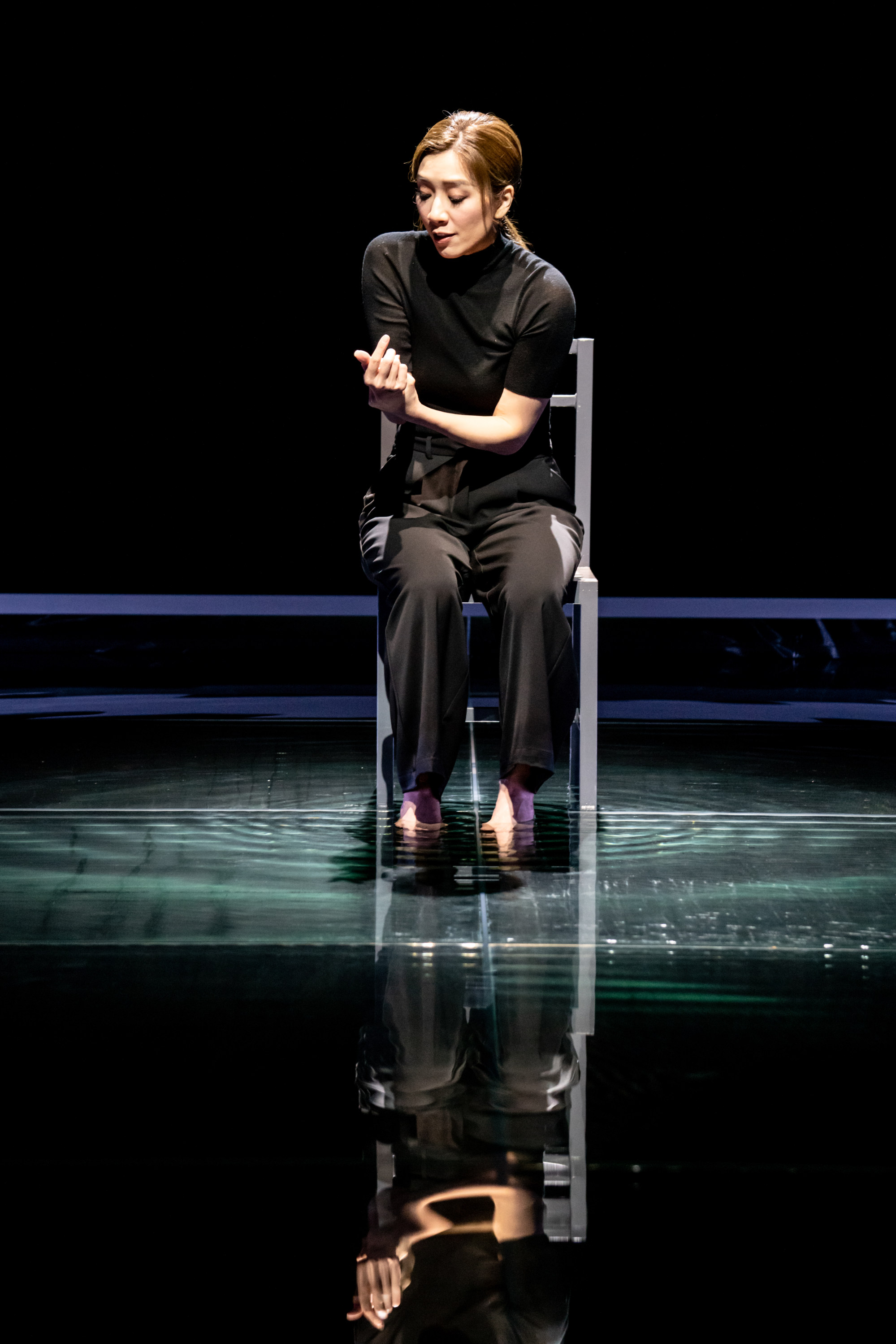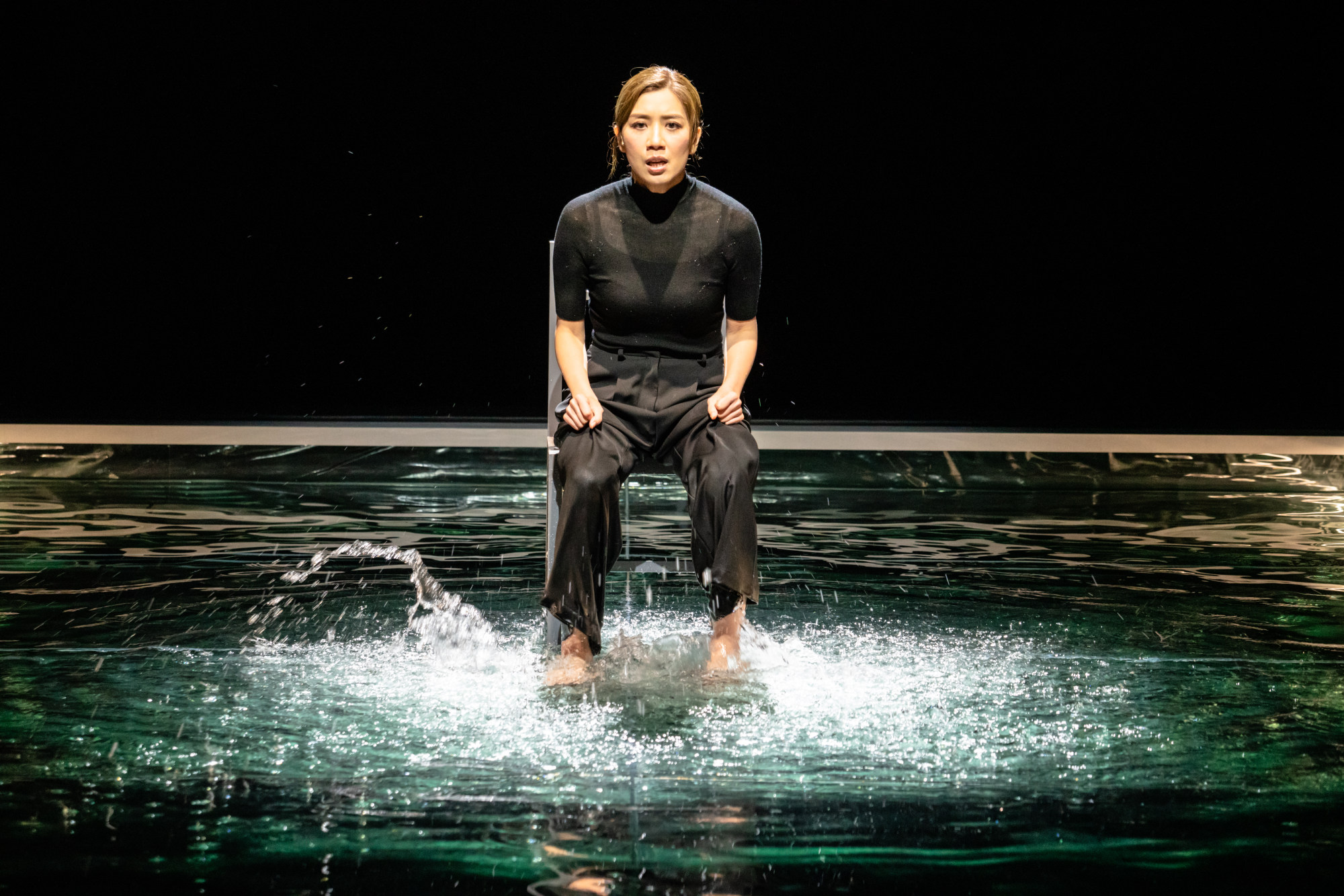
Review | The Bhagavad Gita through Chinese theatre director Tang Shu-wing’s eyes: meditative storytelling in which the spoken word is a distraction
- Tang has dispensed with the spoken word before, and he might have done so in this interpretation of the Hindu sacred text; it is the weak link in the production
- The cast otherwise excel in interpreting abstract ideas through dance and physical movement, including a scene in which a performer skips rope without a break
Among the sacred texts of Hinduism are two Sanskrit epic poems, the Ramayana and the Mahabharata. The Bhagavad Gita, an excerpt from the latter, is regarded as the most important.
It narrates a conversation between warrior-prince Arjuna and his charioteer guide Krishna before they enter the battlefield to claim the rule of a kingdom.
Should the archer in the Pandava camp give up the war against his Kurava cousins to avoid bloodshed, or should he fulfil his duties and fight? His dilemma leads to a discourse on – among other philosophical ideas – action, truth, faith and self-realisation.
The 18-chapter work remains relevant today – it is a standard text, alongside the Yoga Sutras of Patanjali, for those interested in gaining a deeper understanding of the philosophy behind their yoga practice.

In Bhagavad Gita, Hong Kong-based theatre director Tang Shu-wing gives his take on the monumental piece using narrative (in Cantonese), dance, physical theatre, music and stage design.
The 135-minute show begins with narrators Mandy Wong Chi-man and Chu Pak-him taking turns to tell the backstory to the Arjuna-Krishna exchange. Given the Chinese translations of the many names in Sanskrit are hard to grasp – and the blink-and-you-miss-it surtitles – this opening is more distracting than informative.

The Indian classical dance that follows puts the performance back on track. Performed by Peggy Chow and Jasmine Lam, the short but mesmerising Bharatanatyam shows the pair’s technique, rhythm and precision. It is an effective way to illustrate the interaction between the troubled Arjuna and the wise Krishna.
Tang’s production explores the key concepts in the Bhagavad Gita – including detachment from the material world, the need for action without the desire for reward, and the importance of duty and a moral code.
In one scene a performer is seen rope skipping without a break. This could be interpreted as a demonstration of abhyasa, the need to constantly practise over a long period of time to reach enlightenment; one of the goals of practising yoga is to achieve freedom from suffering in the material world and self-realisation.
La Bohème by Opera Hong Kong: a truly superb performance from start to end
While the spoken narrative is the weakest aspect of the performance, Wong and Chu should be commended for memorising and mastering the heavy text, translated by playwright Chong Mui-ngam, and for delivering their lines with emotional colour and intensity.
The rest of the cast – Lau Ting-kwan, Elvin Cheung, Tseky Tse and Cassandra Tang – excelled in interpreting abstract ideas, at times performing demanding physical movements. The set designed by Vanessa Suen, which features an inverted bodhi tree, a table and two chairs, gives a nod to Buddhism and to Chinese operatic tradition.

Tang could have ended his work with the ominous reminder that we are only 5,125 years into the 432,000-year Kali Yuga, also known as the dark age of conflict and sin, in the Hindu calendar.
Instead, he left his audience with a final thought: is his Bhagavad Gita based on the actual text of the epic poem or on Gita GPT, an AI-powered chatbot that uses teachings from the epic poem to answer your questions?
Bhagavad Gita, Tang Shu-wing Theatre Studio, The Box, Freespace, West Kowloon Cultural Centre. Until Jun 25. Reviewed: Jun 16, 8pm

